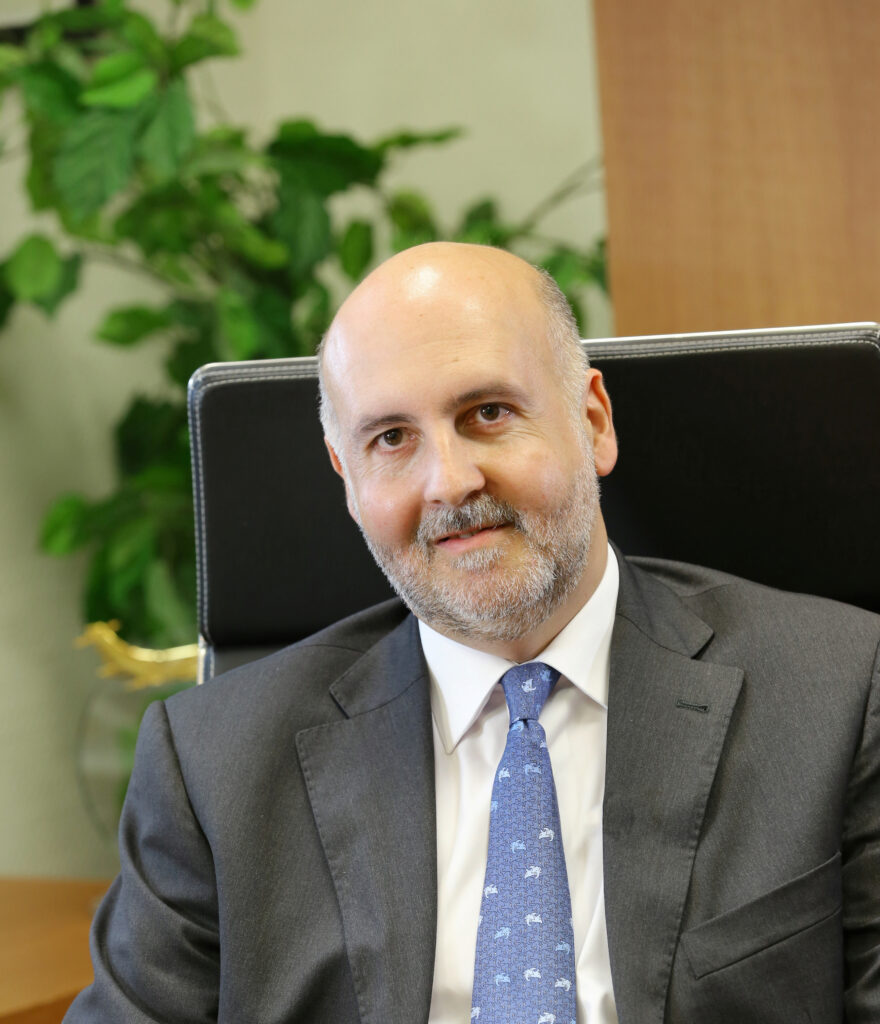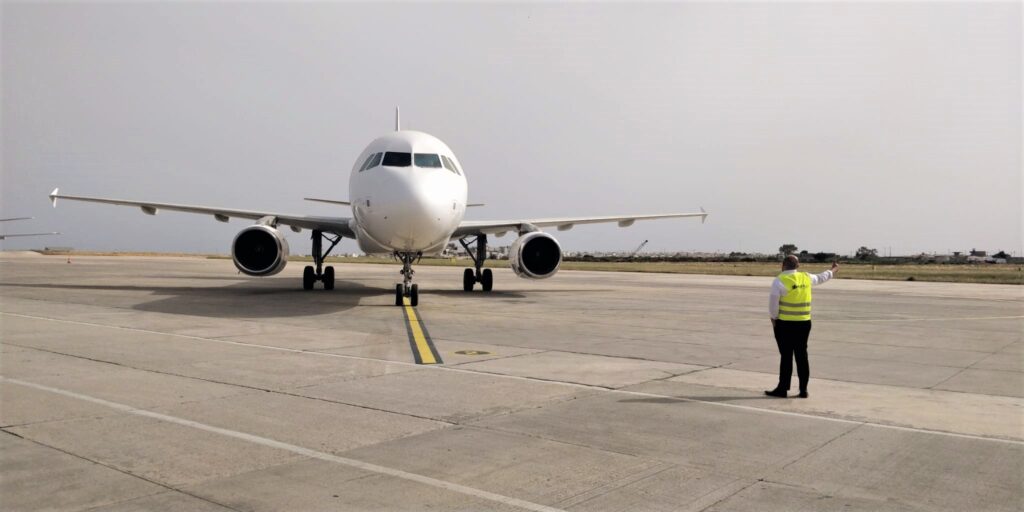LEADING THE JOURNEY TO CARBON NEUTRALITY

MelAir is a Maltese-based company operating four ATR72-600s out of Malta, with another one to follow by the end of 2022. MelAir’s Chairman, Miguel Ángel Falcón, was an engineer for many years and started working in charter companies, including Meridiana.
He has been a shareholder with Spanish regional airline, Air Nostrum since its launch in 1994, and now has completely diversified into several ventures. He is a member of the board at Air Nostrum and also its Vice Chairman. He is also the President and Chairman of Paranair and the CEO of Hibernian Airlines.
Aviation Malta caught up with Mr Falcón to ask him more about his plans.
AS: Could you give me a little bit of background on how your regional airline model started?
MAF: It started 28 years ago with Air Nostrum based in Valencia. Our idea was to become Iberia Regional and focus on the regional aviation market. We put together a group of five people and I was one of them. Our model was to partner with others in this business as I think this business is complicated enough to create on your own.
From the beginning, we designed Air Nostrum to work with Iberia and 25 years on, we’re happy with the model of being the regional aviation partner of the main carriers. By 2008, we had a fleet of about 75 aircraft, mostly built on a 50-seat aircraft profile, mainly CRJ-200s and Fokker 50s, then moving onto Dash 8s. We also evolved with the CRJ-900 then later to the CRJ-1000.
AS: Could you outline your regional business model?
MAF: Iberia and other national carriers are important because of their heritage and tradition. A flag carrier represents the government’s intention to provide for travel and links to a specific place. When we went to Iberia, we pointed all these routes, which in a way Iberia had as a public service obligation, 27 years ago. As a national carrier, this was a must, not a choice. They provided a service, but it wasn’t a good product from a passenger’s perspective. We said “Look, here’s this route, this route, and this route, which you could operate with a smaller capacity.” This would improve profitability and efficiency.
We presented our model and said, “If you step away from your current operating model, we will work with you as Iberia Regional. You’re not losing your presence or your brand, but we’re going to improve the service providing a morning and evening flight and with the additional frequencies as passenger demand grows. The passengers will grow to the extent that you might then need an A320 at peak hours and the regional aircraft will operate the off- peak times of the day. It makes perfect economic sense and the passenger will be delighted. This is what we are still demonstrating 28 years after we launched Air Nostrum.
AS: And today?
MAF: Today we have 50 aircrafts made up of 30 CRJ-1000s, 9 CRJ 200s and 11 ATR-72s. In 2015, we
were probably the largest private regional airline in Europe. We came to the conclusion that we wanted to expand the idea of Iberia Regional and we have a certain knowledge of regional aviation with 28 years of experience. We decided to expand our regional model. Paranair was born, an airline based in Paraguay, invested in Hibernian Airline, an Irish airline and of course MelAir, a Maltese company.
We have also moved into high-speed trains and we are looking to start services in Spain. (25 November 2022).
AS: So, is it like the Renfe AVE high-speed service from Madrid to Seville?
MAF: Yes, Madrid-Seville, Madrid-Barcelona, Madrid- Valencia and Madrid-Alicante in a partnership with Trenitalia and Globalvia. This is a project we have been working on for more than five years. We have also created PLYSA, another business unit dedicated to aerial firefighting and have an 18-strong fleet dedicated to aerial firefighting.
AS: And where does MelAir come in?
In 2015, we worked out a joint venture with Medavia, where we had the majority and in 2017 we became shareholders in Medavia Operations (MedOps). We started to fly with the CRJ-1000 and Medavia’s turboprops. But in early 2020, we encountered the pandemic and had to ground the entire fleet. We spent almost a year reinventing ourselves, trying to survive. Luckily, we now have the full fleet flying again.
AS: Why did you make the shift toward the ATR72- 600 aircraft?
It is the perfect instrument to relaunch or reinforce the turboprop fleet in the various airlines that we have invested in. The ATR72-600 qualifies strongly on that. We were already flying that in the group, but we decided that Mel Air will solely specialise in operating this aircraft type. Right now we’re flying four of those aircraft in the domestic operations in Spain with a fifth ATR72 on the way by the end of the year with the objective to grow throughout Europe. It also has lower emissions, so we have already had several requests from various airlines which are knowledgeable of its operational capabilities.
AS: Why have you chosen Malta as a base of operations?
MAF: We analysed a lot of potential routes that can be accommodated in ATR which would be efficient. Malta is a perfect example of a place where the public needs to commute. Our Iberia Regional model is in Spain but could also be in Italy or Malta regional in Malta if that came to be.
AS: Speaking to your General Manager Ammr Shaladi, he said that the ATR72 gives you a lot of access to different airports in different cities. This seems ideal for the North African market.
MAF: We always had the intention of working in Malta as a gateway to Africa, because I think genuinely there are a lot of things to be done there at the regional level. So again, we see the ATR72-600 as the perfect instrument, not just for some of the domestic sectors in Spain, but for anything that is developed in Northern Africa mainly, we can operate throughout Africa in general and anywhere else in Europe for that matter. I’m a proud chairman of Mel Air and see a lot of opportunities with this company.
We’re currently flying into the Spanish territory of Melilla, North Africa. The runway length is about 1100 meters, so the jet is not welcome there, whereas the ATR72 is most welcome with its superb performance and those 72 seats. It can fly anywhere with a challenging airport, so this includes Andorra, London City, Lugano and Innsbruck.
AS: What other reasons are there behind the move to turboprops?
MAF: Emissions. The environmental aspects of this are becoming more and more significant in every respect, including socially and economically because of all of the ETS (Emission Trading System) that we’re paying along with all the other costs. So again, this has driven a resurgence in the turboprop market. There’s more and more awareness that the turboprop is much more fuel efficient for the short sector. Yes, jets are of course still needed but for short distances, the turboprop does a very similar job, and it saves a lot of fuel. Everybody is aware of the net zero obligations that are coming up it’s the perfect instrument.
AS: But a model that you have fine-tuned?
MAF: I’d like to think that we’ve improved the regional airline operating model because yes, we’ve been reinforcing this with Air Nostrum and our business has kept on growing year on year. I mean, of course, there’s the typical cyclical situation in various economies, but no one really challenges that the regional model is a much better solution than it used to be. So yes, we’re open for business in that respect, not just in Malta but anywhere. I think that is the way the market is going to be moving.



